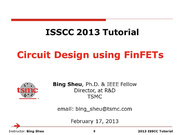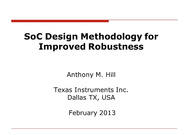WIRELESS TRANSCEIVER SYSTEM DESIGN FOR MODERN COMMUNICATION STANDARDS
Instructor: Iason Vassiliou
Iason Vassiliou received his Diploma in Electrical Engineering from the National Technical University of Athens
in 1991 and his M.Sc. and Ph.D. in Electrical Engineering from the University of California at Berkeley in 1995
and 1999, respectively. Currently he is an Associate Technical Director at Broadcom, Greece. His main
responsibility is radio system design and has worked on transceivers for WLAN, 60GHz, digital TV and LTE. Mr.
Vassiliou holds 10 issued US patents and has authored several conference and journal papers, contributed 2
book chapters on wireless transceivers and analog CAD and has taught as a guest lecturer at professional
seminars.
Defining the architecture and deriving specifications for modern wireless communication radio transceivers is a cross-domain task that requires understanding of digital communications, signal processing, radio architectures, analog/RF circuit design, discrete PCB system design, IC process and real-world product experience. This tutorial introduces the basic terminology used, such as NF, IIP2, IIP3, and provides an overview of the architecture selection and specification derivation procedure using state-of-the-art examples such as 3G/LTE cellular, 802.11ad and others. Starting from regulatory and communication standard document requirements such as sensitivity, blocking, spectral mask, EVM, etc., and taking into account different transceiver topologies, detailed transceiver specifications such as gain NF, IIP2, IIP3, cross-modulation, phase noise, filtering profile, I/Q mismatch, ADC resolution are derived and mapped onto circuit blocks. This is done by using both analytical calculations and simulation results, while the various transceiver performance degradation mechanisms are explained.
 Cart
Cart Create Account
Create Account Sign In
Sign In





